 VOLCANO,Hawaii-Visitors are flocking to witness the spectacular eruption at Hawaii's Kilauea volcano despite summit explosions,toxic fumes and partial closures at the national park.Nearly 9,000 people a day are touring Hawaii Volcanoes National Park on average so far this year, a 2.5 percent increase over last year when the volcano's 25-year eruption was much more peaceful, said Cindy Orlando, the park's superintendent."Everybody's coming.I think they recognize they have an opportunity to participate and be here at a very historic time," Orlando said. "They're witnessing the creation of earth, and you can't experience that anywhere else in the world."Inside Hawaii Volcanoes National Park, viewers can see the plume of ash and sulfur dioxide rising from Halemaumau Crater, which spewed small blobs of lava that fell along its rim this week and exploded gas and gravel-sized rocks on the summit last week-the first such burst from Kilauea's main crater since 1924.Outside the park along the southeast edge of the Big Island, as many as 10,000 visitors in one day have come to see fresh lava collide with the ocean, creating a giant cloud of steam, according to county and park officials. A new lookout point allows viewers to get about 600 feet from the lava flow.Emergency officials are preparing to evacuate the area if the winds change, moving the fumes' course inland toward areas with a scattered population approaching 10,000. So far, Hawaii's famous tradewinds are pushing the plume to the southwest.The highly concentrated levels of sulfur dioxide could pose serious health risks, especially to people with existing respiratory problems. State health officials say the gas has not posed serious problems so far because it is blowing more toward the ocean."It's unpredictable. The last several months have been extremely unusual, and perhaps the most exciting activity on Kilauea in decades," said Tim Orr, a geologist at Hawaiian Volcano Observatory.Most of the national park remains open, including the visitor center, Volcano House Hotel, Kilauea Military Camp, Volcano Art Center Gallery, Thurston Lava Tube, Devastation Trail, Chain of Craters Road, Petroglyph Trail and all backcountry campsites.Closed areas include all trails leading to Halemaumau Crater and part of Crater Rim Drive near the ash-laden toxic gas plume.The volcano has not given rangers reason to believe it's about to blow because there's no visible lava in the crater itself, little seismic activity and no surface swell, Orlando said."As long as the winds stay as they are, there is no danger," she said. "The park is Hawaii's gift to the world, so we want to keep the area open as long as we can."About 536,000 people visited Hawaii Volcanoes National Park in January and February, the most recent months for which data has been compiled, she said.Park ranger Arnold Nakata said he's trying to allow as many people as possible to view the volcano's recent activity while ensuring their safety."This kind of activity is inevitable," Nakata said of the changing lava flows. "It's minute-to-minute. At any given time, this could stop and change."
VOLCANO,Hawaii-Visitors are flocking to witness the spectacular eruption at Hawaii's Kilauea volcano despite summit explosions,toxic fumes and partial closures at the national park.Nearly 9,000 people a day are touring Hawaii Volcanoes National Park on average so far this year, a 2.5 percent increase over last year when the volcano's 25-year eruption was much more peaceful, said Cindy Orlando, the park's superintendent."Everybody's coming.I think they recognize they have an opportunity to participate and be here at a very historic time," Orlando said. "They're witnessing the creation of earth, and you can't experience that anywhere else in the world."Inside Hawaii Volcanoes National Park, viewers can see the plume of ash and sulfur dioxide rising from Halemaumau Crater, which spewed small blobs of lava that fell along its rim this week and exploded gas and gravel-sized rocks on the summit last week-the first such burst from Kilauea's main crater since 1924.Outside the park along the southeast edge of the Big Island, as many as 10,000 visitors in one day have come to see fresh lava collide with the ocean, creating a giant cloud of steam, according to county and park officials. A new lookout point allows viewers to get about 600 feet from the lava flow.Emergency officials are preparing to evacuate the area if the winds change, moving the fumes' course inland toward areas with a scattered population approaching 10,000. So far, Hawaii's famous tradewinds are pushing the plume to the southwest.The highly concentrated levels of sulfur dioxide could pose serious health risks, especially to people with existing respiratory problems. State health officials say the gas has not posed serious problems so far because it is blowing more toward the ocean."It's unpredictable. The last several months have been extremely unusual, and perhaps the most exciting activity on Kilauea in decades," said Tim Orr, a geologist at Hawaiian Volcano Observatory.Most of the national park remains open, including the visitor center, Volcano House Hotel, Kilauea Military Camp, Volcano Art Center Gallery, Thurston Lava Tube, Devastation Trail, Chain of Craters Road, Petroglyph Trail and all backcountry campsites.Closed areas include all trails leading to Halemaumau Crater and part of Crater Rim Drive near the ash-laden toxic gas plume.The volcano has not given rangers reason to believe it's about to blow because there's no visible lava in the crater itself, little seismic activity and no surface swell, Orlando said."As long as the winds stay as they are, there is no danger," she said. "The park is Hawaii's gift to the world, so we want to keep the area open as long as we can."About 536,000 people visited Hawaii Volcanoes National Park in January and February, the most recent months for which data has been compiled, she said.Park ranger Arnold Nakata said he's trying to allow as many people as possible to view the volcano's recent activity while ensuring their safety."This kind of activity is inevitable," Nakata said of the changing lava flows. "It's minute-to-minute. At any given time, this could stop and change."As in the days of Noah....

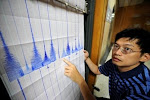
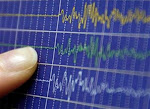
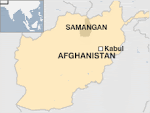







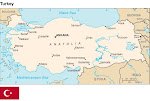
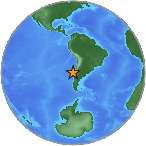




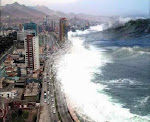

.jpg)


.bmp)
No comments:
Post a Comment